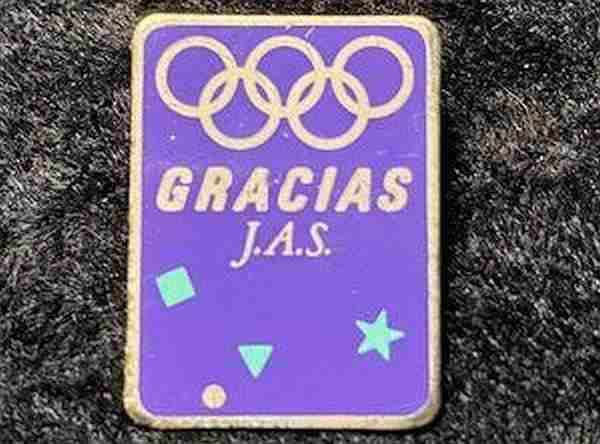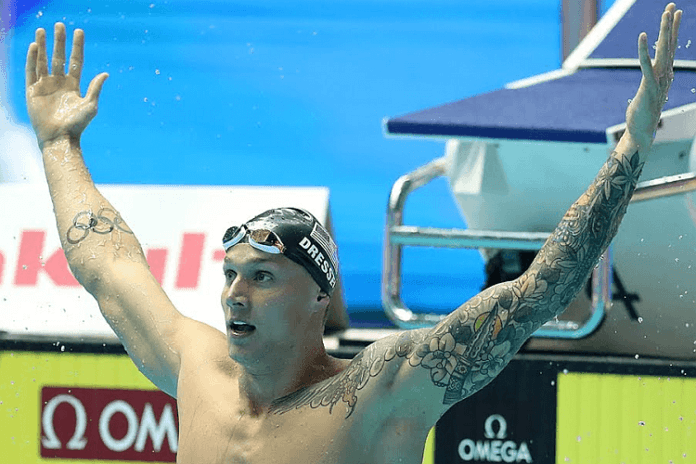(★ Friends: Thanks to our 18 donors who have helped cover 23% of our new bill for server and support costs. If you would like to support our coverage, please donate here. Your enthusiasm is the reason this site continues. Thank you. ★)
(For Sunday’s Highlights of international competitions, click here. For our U.S. Olympic Trials coverage, click for swimming or track & field.)
On Sunday, 13,091 fans attended a Nippon Professional Baseball game in Sendai, while 7,726 saw a game in Tokorozawa and 7,636 were at Neiji Jingu Stadium in Tokyo to see the Yakult Swallows defeat the Chunichi Dragons, 2-1.
In Japan’s first division football conference, the J-League, 9,312 saw the match in Kashima on Sunday, 4,810 attended the game in Saitama and 3,736 were in Sapporo on Saturday.
Thus, in what should have been a surprise to no one, the Tokyo 2020 organizing committee – in concert with the regional and national Japanese governments – approved a plan on Monday to allow domestic spectators to attend the Olympic Games in Tokyo next month:
“[T]he IOC, IPC, Tokyo 2020, Tokyo Metropolitan Government and the Government of Japan agreed for the spectator limit for the Olympic Games to be set at ‘50 per cent of venue capacity, up to a maximum of 10,000 people’ at all venues, taking into consideration the government’s restrictions on public events.
“The IOC and IPC were informed about and support the policies the three Japanese parties have decided on.”
So, make no mistake, this was a decision by the Japanese organizers and the government to allow a limited number of spectators, not the International Olympic Committee or International Paralympic Committee. And it is exactly in line with organizing committee advice months ago that the decision on allowing (only) domestic spectators would closely follow what is being done for domestic sporting events, such as the NPB and the J-League.
Credit to Tokyo 2020 for saying what it expected to do and then doing it. Same for the Japanese government and the Tokyo Metropolitan Government. The International Olympic Committee and International Paralympic Committee issued a joint statement of support for the plan.
There are conditions, of course, and if the Covid-19 situation changes in Japan, this policy will have to change as well. Spectators will be restricted:
“[M]asks should be worn in venues at all times; speaking in a loud voice or shouting will be prohibited; congestion should be avoided by means of appropriate announcements; and visitors should leave venues in a staggered manner. Spectators will be requested to travel directly to venues and return home directly, and to take all necessary precautions when moving between prefectures.”
At a follow-up news conference in Tokyo, organizing committee chief Seiko Hashimoto said that a new ticket lottery will have to be held as there are more tickets already sold than the capacity limits will allow for. Tokyo 2020 chief executive Toshiro Muto indicated that “the number of tickets will likely be reduced to about 2.72 million from 4.48 million sold before the pandemic, and the revenue from them will be less than half of the initially projected 90 billion yen ($820 million).”
Further, significant reductions were also made by the Tokyo Metropolitan Government in concert with the national government, announcing on Saturday that all six “public viewing sites” for the Games in Tokyo have been canceled and some will be converted into mass vaccination sites.
Prime Minister Yoshihide Suga said Monday that if another state of emergency is declared – Tokyo’s current state of emergency ended on Sunday (20th) and a “quasi-state of emergency” continues for Tokyo and other prefectures through 11 July – no spectators will be allowed during the Games.
This comes amid continued concern in Japan about the virus, but also a modest rise in support for holding the Games. A Kyodo News poll over the weekend showed 86.4% were worried about a rise in infections because of the Games, only 30.8% said the Games should be canceled. Some 40.3% would prefer the Games be held without spectators. And, tellingly, if a state of emergency was to be declared again, only 35.8% supported canceling the Games and 55.7% said the Games should go on with added counter-measures such as no spectators.
All of this is against a backdrop of 59.9% who were unhappy with the government’s response to the pandemic. The support for the Games is much higher.
So, what is the actual impact of the spectator policy? Using the Wikipedia page for Tokyo 2020 as an easy reference, the only Tokyo venues which might get to the 10,000 limit would be the new Olympic Stadium (68,000 capacity), Tokyo Stadium (49,970) for football, Rugby Sevens and part of the Modern Pentathlon, and the temporary venue for rowing, canoeing and equestrian eventing at the Sea Forest Waterway, where bleachers for 20,000 were projected.
The other venues are all much smaller:
● 5,000 or less: 4 ~ meaning 2,500 spectators or less;
● 5,001-10,000: 9 ~ meaning 5,000 spectators or less;
● 10,001-15,000: 7 ~ meaning 7,500 spectators or less.
Muto said that the 10,000 spectator cap would apply to the Opening Ceremony, but would not include the teams or Olympic officials, meaning the total number of people inside the new National Stadium would be 20,000 or so.
It would have been easier for the Tokyo organizers and the Japanese government to simply ban all spectators and just move on. It would have been easier – and possibly financially advantageous – for the IOC to cancel the Games in 2020 amid the outbreak of the pandemic. Neither did so; they should get credit for that.
There is still a long way to go in the saga of the Games of the XXXII Olympiad and the 16th Paralympic Games to follow. But the Tokyo 2020 organizers have gone far beyond what has been asked of any Olympic Organizing Committee since perhaps the 1948 Games in a still-recovering London in putting on this massive event despite the historic challenges of the pandemic and the postponement.
After the astonishing success of the 1984 Olympic Games in Los Angeles, IOC President Juan Antonio Samaranch commissioned a special “Gracias” pin with his initials “J.A.S.” that was distributed along with a certificate of appreciation to the entire Games workforce to recognize their achievement in reinvigorating the Olympic Movement. Perhaps the IOC should do the same for the Tokyo organizers, volunteers and all those in government who will make the Games work, but this time offer thanks before the Games begin!
Rich Perelman
Editor
You can receive our exclusive TSX Report by e-mail by clicking here. You can also refer a friend by clicking here, and can donate here to keep this site going.
For our 649-event International Sports Calendar for 2021 and beyond, by date and by sport, click here!


























